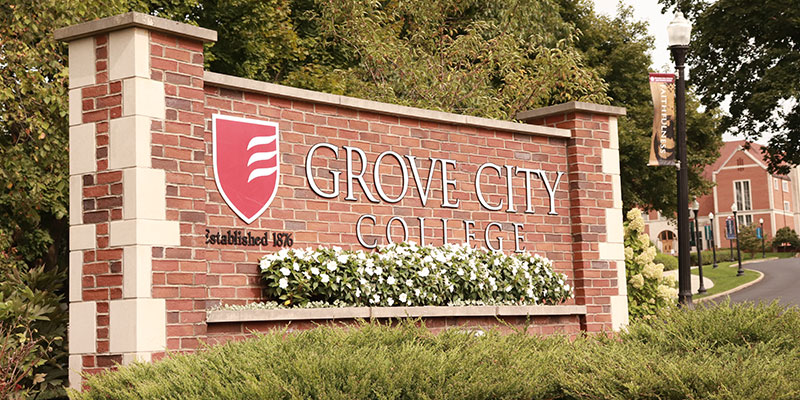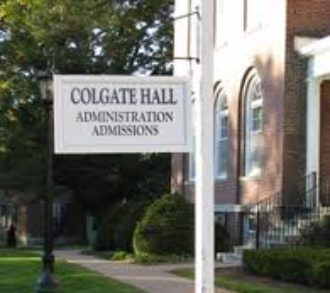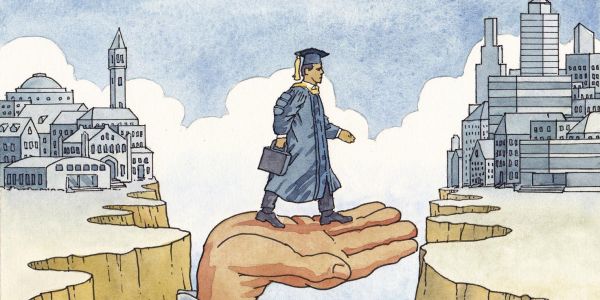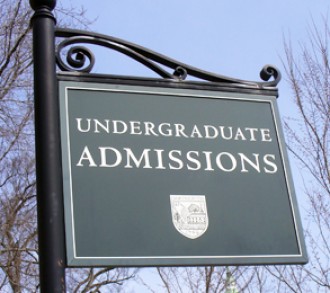Why is College So Expensive? 0
The cost of private four-year colleges and universities has steadily increased far beyond the means of all but a small % of American households. Here are the first reasons as to why college is so expensive.
The Higher Education Act of 1965 marked the beginning with NO end!
President Johnson signed the Higher Education Act in 1965. The act aimed to strengthen the educational resources of our non-profit colleges and universities in the US and provide financial assistance to students in postsecondary and higher education. What first appeared to be a positive thing has become something entirely different.
There are four primary reasons for that. Read the linked history!
- In 1971, President Nixon broke the 1944 Bretton Woods Agreement and removed the dollar from the gold standard. The Federal Reserve was printing dollars like there was no tomorrow during what is now known as the “Guns and Butter” decade of the sixties. Nixon’s move was the catalyst for inflation as the dollar lost value.
- One year later, Nixon signed Title IX of the Civil Rights Act into law. Many of the most expensive private colleges were beginning to admit women. Title IX prohibits gender-based discrimination in any college or other education program that receives funding from the federal government, aka American taxpayer dollars.
- In the fall of 1979, President Carter raised the Department of Education (DOE) to a cabinet-level position. All colleges agreed with the principles of Title IX. However, a few questioned the long-term impact the law would have on academic freedom and the cost of college. One of those was a highly regarded regional liberal arts college in Pennsylvania…Grove City College. It did not agree to sign the Title IX agreement because it had already followed the ideals of Title IX since the co-ed colleges’ founding in 1876.

- Upon close examination, the college’s Board of Directors decided Title IX would increase families’ college costs.
Grove City College was 100% correct!
But they had to go all the way to the Supreme Court to maintain their independence. Watch the video on their website. www.GCC.edu. (Type ‘Supreme Court Case’ in the search box.) That is proof enough to show how Title IX has been the key factor in why college is so expensive today!
The entire cost of attendance (COA) for a most competitive four-year private college in 1962 averaged $2300 to $3200/year. 2025, those same colleges will cost $75,000 to $85,300/year. State universities now cost up to $39,000/year. (Out of state, $51,000.) Financial aid has not made the colleges affordable. In fact, in most cases, it has made them more expensive and put more students and their parents into debt. The formulas used to determine “need” penalize families that save for college. The Asset Protection Allowance (APA) in 1990 has been steadily reduced to Zero in 2024! Read what follows carefully.
The Higher Education Act of 1965 included Stafford loans to students at an increased annual amount over five years. However, by 1980, colleges began to increase their yearly costs as the DOE expanded the grant and loan amounts to students with need. All kinds of adjustments to benefit colleges more than students began to appear by astute observers. None of which could be forgiven in bankruptcy.
As families became alarmed at higher costs, the paid college lobbyists went to work and influenced the lawmakers in Congress to make adjustments to “help” families afford college. The DOE made it even less affordable. In 1980, the Parent Loan to Undergraduate Students (PLUS) was introduced as a “generous” funding source for parents. Only one parent needed to sign, and no serious credit check was required. The borrowing limit was $4000/year. However, as colleges increased their costs, their lobbyists went to work.
In 1993, the $4000 annual cap was removed, allowing parents to borrow up to the full cost of attendance, less any other financial aid received by the student. That soon put parents in more debt than the students with their Stafford loans.
It gets worse. Now, Congress does not even believe a family of four, for example, with the oldest parent, age 48, needs an emergency fund of about $49,000! Such budget planning was once sacrosanct and basic to sound family financial planning. It does not say much about either Congress or non-profit tax-exempt colleges’ understanding of basic economics. Now, three to six months of household expenses are considered an asset to pay for college. Not to mention any tax-deferred retirement that was invested during the previous year.
Plus, Congress continues to bend under the pressure of paid college lobbyists NOT to increase the financial need when a family simultaneously has more than one student in college! In other words, if the Student Aid Index (SAI), formerly the misnamed Expected Family Contribution (EFC), were $40,000 with one in college, it would be the same for each student in college, not $20,000/per student.
The Department of Education’s Federal Student Aid Office changes will affect seniors, rising 11th graders, and younger. Therefore, parents should be aware of what is coming for planning purposes. If a family with more than one child is not debt free by the time the first applies to college, the family income is less than $400,000, and the family is living below its means, there will be some challenges ahead.
The good news is that practical solutions can be implemented to lessen stress and lead to positive outcomes. It is a simple three-step process.
Call Programs for Education @ (978) 820-1295 or email help@SmartCollegePlanning.org to learn about the money-saving Dry Run that very likely will save you thousands each year in college costs, not to mention time.
Do You Have College Aspirations? 0
 The college-bound Class of 2027 is now in their junior year. Is that you? In some ways, it is the most important year for you. It is your last reprieve before the hectic college admission schedule of senior year begins… not in September, but in June 2026. Just ask the seniors what this means and they’ll tell you! But you can avoid most of the stress and frenzy by getting organized this fall semester. You should have already set up an account at www.Commonapp.org even if you think you are only going to apply to a state university. Even if you are a freshman. Call us with any questions anytime. (978) 820-1295
The college-bound Class of 2027 is now in their junior year. Is that you? In some ways, it is the most important year for you. It is your last reprieve before the hectic college admission schedule of senior year begins… not in September, but in June 2026. Just ask the seniors what this means and they’ll tell you! But you can avoid most of the stress and frenzy by getting organized this fall semester. You should have already set up an account at www.Commonapp.org even if you think you are only going to apply to a state university. Even if you are a freshman. Call us with any questions anytime. (978) 820-1295
As a junior, you can probably see the end of your high school career is near. One of the most important factors that colleges take into account is your course selection and grades. Colleges also place more emphasis on your junior and senior grades than those from previous years. (Excuse me! That is NOT true, it depends on the college.)
Junior year is also the second-best time (sophomore is better) for most of you to be participating in meaningful extracurricular activities. However, only get involved in the activities that truly interest you. Try to make a significant contribution to something that you enjoy doing outside of the classroom. It does not have to be school-related either. When colleges look at your activities they want to see the quality of participation, not quantity. This year may also be a good time to drop some of the activities that you really don’t care for and focus on those that you enjoy.
If you’ve never had a meaningful conversation with any of your teachers, now is the time to do so. Don’t force it, but building a natural teacher-mentor relationship with your teachers is a good thing. Next year you will need to ask at least two or your junior year teachers for recommendations. Ideally, he or she will be able to not only write about your intellectual curiosity, improvement over the year, and overall classroom participation. but something specific you have done in that class. At the MOST competitive colleges, with thousands of applicants with identical academic profiles, the recommendations can be the deciding factor. After you click the link above and read my essay there, ask me for the special “icing on the cake” letter that you can send along to the teacher, with your all-important thank you letter! 
Finally, you should also take this time to start collecting and organizing information from colleges. If you have started this process with us, you now have a good list of colleges based on the results of four insightful self-assessments (Personality ~ Nine Natural Intelligences ~ Learning Style ~ Skills) and your personal preferences. Plan to visit colleges during your winter and spring breaks later this year. For now, you can visit colleges on the web using the AAA method to become familiar with what they have to offer and if they have the qualifications to help you reach your goals. In your personal binders you have my essay on “How to Get the Most Out of Your College Visits” . But here is another one. Let me when and where you will be visiting, if possible. For particular colleges I may have some specific tips for you. (978) 820-1295.
How to Ensure That College is a Good Investment 0
 When the high school Class of 2026 becomes the college Class of 2030 as freshmen in college, the College Board continues to support the belief that earning a college degree now is more important than ever in the global economy. A typical bachelor’s degree recipient, they claim, earns 80 percent more than a high school graduate over a 40-year career, amounting to more than $500,000 over a lifetime. That financial incentive has resulted in an enrollment surge for American colleges and universities in the past decade.
When the high school Class of 2026 becomes the college Class of 2030 as freshmen in college, the College Board continues to support the belief that earning a college degree now is more important than ever in the global economy. A typical bachelor’s degree recipient, they claim, earns 80 percent more than a high school graduate over a 40-year career, amounting to more than $500,000 over a lifetime. That financial incentive has resulted in an enrollment surge for American colleges and universities in the past decade.
In addition, since 1990, supply and demand and increased Federal Aid loan and grant programs (for the poor) have allowed colleges to continue raising tuition and fees faster than inflation. (Grove City College is a prime exception.) This has stretched parents’ budgets, with incomes ranging from $100,000 to $350,000, to save even enough to cover one or two years of college costs. In past posts, I discussed why college is so expensive.
When the financial bubble burst because of lack of oversight of investment banks in 2008, average college costs in the U.S. consumed some 40 percent of median earnings in the United States, up from less than a quarter of income eight years earlier.  Now, as students and parents have fallen prey to the student loan scam, debt has surpassed more than $1 trillion, and parents are asking what they were getting in return for the high cost of a college degree. While the value of higher education in preparing for a career continues to be the big selling point in promoting college, prospective students and their parents are beginning to cast doubt on the return on investment of certain majors and particular colleges.
Now, as students and parents have fallen prey to the student loan scam, debt has surpassed more than $1 trillion, and parents are asking what they were getting in return for the high cost of a college degree. While the value of higher education in preparing for a career continues to be the big selling point in promoting college, prospective students and their parents are beginning to cast doubt on the return on investment of certain majors and particular colleges.
In response, many colleges, like Lafayette and High Point University, are focusing even more on their students’ outcomes and putting in place programs to prepare their undergraduates for the job market better. In an extensive survey of college leaders conducted by The Chronicle of Higher Education in the fall of 2014, six in 10 reported increased discussions about job preparation for their graduates in just the past three years. The survey, completed by some 800 vice presidents, deans, and directors at two-year and four-year colleges, focused on their attitudes about the value of their degrees, strategies to measure the outcomes of their graduates, and what skills higher education should provide to students.
President Obama used the annual address to announce new higher-education proposals that did not bring joy to college administrators who wanted more federal dollars for student aid. But on this night, the president was not to announce any new federal investment in higher education. Instead, he said his administration would release a new College Scorecard that parents and students can use to compare schools based on a simple criterion: where you can get the most bang for your educational buck.
Now, a government tool (and additional layers of costly, redundant bureaucracy) would turn college into a product to compare in the same way consumers size up cars or televisions in Consumer Reports. The more things that change, the more they stay the same. Everyone wants to protect what they have, mainly if what they have is a cash cow.
Working with students with college aspirations, we show them the value of following steps that will lead to the outcomes they want. One of those steps is helping them discover what they want, and another is helping them understand the financial ramifications of those decisions.
 While colleges and universities attempt to redefine their approaches to measuring student outcomes after graduation, we show families how to do their due diligence in estimating the merits of colleges by asking good questions and applying good old, albeit rare, critical thinking.
While colleges and universities attempt to redefine their approaches to measuring student outcomes after graduation, we show families how to do their due diligence in estimating the merits of colleges by asking good questions and applying good old, albeit rare, critical thinking.
It all starts with a complimentary get acquainted, no obligation conversation with us at (978) 820-1295. Simple postgraduate surveys are not enough for many prospective parents and students. However, there are proven methods to prepare students for the job market and measure their success long after graduation.
Are You Ready to Apply Early Decision, or for that matter Early Action? 0
It never fails. As fall approaches each year, college-bound seniors are being asked by their peers, What schools are you applying early to? or What is your ED (early decision) school? The questions are almost presumptive in tone as if applying early is the best strategy in applying to college.
Students assume they will be applying early somewhere. Forget about the fact that they may have not even started the essays, done any substantive research into the college or have learned if it is affordable or not and how the adcoms will look at that them.
I remind them each year that if they have identified a college that it absolutely their first choice and would die if not admitted, to discuss the merits with me. There are many different types of admission policies. Here I will discuss how to approach making the Early Decision, decision. But it is also applicable for Early Action which is often a more competitive pool in which to compete.
However, since Early Decision is a binding commitment to attend if admitted, it is important to make sure that each student considers the most important question of all. That is Is applying Early Decision the right choice for you? Here’s a self-quiz to help you decide if you’re ready to apply Early Decision.
Answer Yes, No or Not Sure to the following questions:
1. Are you applying Early Decision mainly because you have decided that one particular college is your clear first choice?
2. If the college you’re considering for Early Decision suddenly became less prestigious, or its ranking dropped 50 points, would you still want to apply to this college Early Decision?
3. Would you still want to apply to Early Decision college if your chances of admission were the same as if you used to attend Regular Decision?
4. Have you visited your prospective Early Decision College at least once, including taking a formal admissions tour rather than just walking around on your own?
5. Have you visited several other colleges, including taking their formal admissions tour rather than just walking alone?
6. Have you had some form of personal contact with the admissions office at your prospective Early Decision College? Have you researched the internship requirements, if any, for your prospective major?
How to Show You Are Interested 0
 When I looked at colleges, DI stood for drill instructor, not demonstrated interest. Many kids in my generation had very little interest in knowing the DI. In the myriad of acronyms and abbreviations surrounding the college process today, DI refers to the level of interest the applicant demonstrated in a particular college.
When I looked at colleges, DI stood for drill instructor, not demonstrated interest. Many kids in my generation had very little interest in knowing the DI. In the myriad of acronyms and abbreviations surrounding the college process today, DI refers to the level of interest the applicant demonstrated in a particular college.
How important is the college admissions committee (ad com) placed on demonstrated interest? The answer is not much, some, and very much. In other words, it depends on the college. Emory and American, for instance, will admit it considers the applicant’s level of interest. Others, like Stanford and MIT, may say it does not matter how much interest you show; they look at all applicants equally. But I suspect they say that to ward off students who want to game the system, as you will learn here.
Regardless of what a school may say, I recommend that all students try to show demonstrated interest and learn as much about their prospective colleges as possible. It all starts with research using the AAA method. Once that is accomplished, the student should have a good idea of the appropriateness of each college on his or her list. Is it a good fit intellectually, compatible with one’s values, and, based on the Common Data Set, is it a reach, a 50/50, a safety, or in the snowball chance in ____ category? Not to mention, are they affordable? Further inquiries must be made if such due diligence still leaves the college on the list.
Such inquiries may be described as showing demonstrated interest, and that is fine. For instance, prospective students should know the depth and nature of academic internships and career advising. Other good conversation starters are:
- Is the faculty 100% invested in the teaching of undergrads, and if teaching assistants are used, what are their responsibilities? (Universities primarily)
- What has been the four-year graduation rate over the last four years, and does it vary with major?
- Are specific programs offered in the (your intended major) department going to be expanded or cut back?
- I am a student at a high school that does not give grades. Are you familiar with the ________ Schools curriculum? How do you compare my application with someone from a more traditional high school?
- What will be the merit scholarship criteria for the _______ Scholarship next year?
Do this more to learn more about the school’s attitude toward students than with the intent of buttering up the regional admissions counselor. Colleges can spot the disingenuous inquiry. Thoughtfully think about the questions before you call (or email) them. Of course, be sure you are not asking questions already answered in the college website’s fast facts or FAQ sections.
By the way, too many students are taking their safety schools for granted. Applicants should have some good reasons why they would be okay with their safety, too. Carefully research and show interest in them as well. Such fallback colleges have been known to wait-list or reject students whom the adcom has determined would not attend if accepted. No college markets itself as the # 1 favorite safety school, so buyers beware. Even state colleges are hard-pressed to admit the students they once could because of the overflow of applicants. States are cutting back faculty, programs, and other costly expenditures that have once been taken for granted. In many cases, a top student may be able to go to a private college at much less than a state-supported public.
If you are in the Class of 2026, now is the time to review your college list. Most of you will take the SATs and the ACT this year. At the end of June 2025, you will start the college application and essay writing process; call or email us if you need help.
Good News for the Undergraduate 0
For 30 years, I have been encouraging college students to take full advantage of their college’s advising services. (Get your gift below.) This includes professor mentoring, internships, and the Career Planning Services office. One does not have to look very far to learn that many college graduates are leaving college with student loans and few job prospects, much less any related to their chosen major.
Over the last four years, we have had challenges stemming from the global pandemic that put a strain on the economic systems world wide. What was not understood is that over 98% of healthy humans are either immune or can recover with by following simple health regimes and gain an understanding of the innate power of the human immune system. Hopefully, if you a student with aspirations to become a doctor or nurse you will be required to study text books like this. Pandemics have occurred over the years; remember this one? I have been a lifelong proponent of teaching the values of Naturopathic and Allopathic methods toward achieving wellness. In the ER, for example, the latter’s procedures would be more important than the former. I encourage everyone to do their due diligence in understanding the principles and steps toward achieving and maintaining optimal health. I have been giving easy to digest (pun intended) seminars this past year teaching those steps. Thankfully, it is not rocket science. Call me at (978) 496-7462 for the books and simple methods, I recommend to students and adults to learn how to strengthen your immune system. Now, back to more good news!
 It is encouraging to see more colleges proactively taking their role as advisors. For instance, look at Lafayette College’s website. They start preparing students when they are freshman. In addition it will open their books to prospective students with information about what past graduates have been able to accomplish.
It is encouraging to see more colleges proactively taking their role as advisors. For instance, look at Lafayette College’s website. They start preparing students when they are freshman. In addition it will open their books to prospective students with information about what past graduates have been able to accomplish.
If you are a recent graduate or parent considering doing something new, here are two resources I can confidently recommend. They can work with you wherever you call home. 🙂
1. Kim Meninger, MBA, a very intuitive Executive Coach and Career Strategist. Take your first step here.
2. Joanne Meehl Career Services offers terrific tips on her Blog and one-on-one counseling. She offers a plethora of resources and personal insight from her her years of experience in both counseling and networking, regardless of your age. Sign up today for her newsletter.
If you are a college student, how much research into the advising and internship options have you done? If little, familiarize yourself with the career services office, even if you are a freshman. By the way, one student who took interning VERY seriously turned her experience into a business. Meet Lauren Berger, the InternQueen.
Once you have successfully navigated the first year and know what is expected academically, it is time to get serious and consider why you are in college.
The passing of Steve Jobs reminded me of his 2005 graduation talk to Stanford graduates. It is undoubtedly one of the finest commencement speeches ever delivered in history! Here is the life-changing message. Think about what he said. For me, it was one of the most insightful and spiritually aware statements of purpose I have ever heard. Let me know what you think.
Speaking of “insightful,” if you have done your four (4) insightful self-assessments with us, do not forget they reveal within them a rich resource of career descriptions and academic concentrations that match up to your natural strengths and innate characteristics that will comprise your personality for your life on this planet we call Earth!
It will be at your fingertips for years to come. Take advantage of that. If you have not bookmarked the link, I will send you the link. In addition, if you have any questions regarding your choice of major, send me an email ~ help@SmartCollegePlanning.org
Finally, for all undergrads (or recent grads) who complete our undergraduate survey here by August 31, 2025, I will send you a book of paramount importance, whatever your major. I look forward to hearing how you are doing soon.
Crossing the Gap ~ Preparing for the Transition 0
 In the post WW II era of the early 50’s there were approximately 3 million college students; now there are 20 million. A college degree which used to be seen as a luxury, something which would, in a lifetime, enrich and enlighten….is now seen as a ticket to a bigger paycheck. Colleges, supported by the College Board and politicians in the District of Columbia, continue to say that a Bachelor degree is worth over 1.3 million dollars more in earnings than a high school diploma. Look at the report published by Georgetown University’s Center on Education and the Work Force.
In the post WW II era of the early 50’s there were approximately 3 million college students; now there are 20 million. A college degree which used to be seen as a luxury, something which would, in a lifetime, enrich and enlighten….is now seen as a ticket to a bigger paycheck. Colleges, supported by the College Board and politicians in the District of Columbia, continue to say that a Bachelor degree is worth over 1.3 million dollars more in earnings than a high school diploma. Look at the report published by Georgetown University’s Center on Education and the Work Force.
 But now we hear that the undergraduate degree is not enough and that an increasing number of graduates are unemployed or underemployed. If that is true, why is it true?
But now we hear that the undergraduate degree is not enough and that an increasing number of graduates are unemployed or underemployed. If that is true, why is it true?
- Are employers raising the proverbial bar for advancement or even entry level jobs within the organization?
- Is it because colleges are graduating students with little more knowledge or critical thinking skills than they had in high school ?
- Or is it because college graduates are not prepared to enter the work force because they have had little or no substantive work experience while they were college students?
- I once interviewed a Harvard Economics graduate for a position in the financial firm I worked for in NYC. I asked him if he was familiar with the “Rule of 72“? He never heard of it. All of our students learn this before they finish high school. If you are earning money now or just graduated from college, here is a firm I trust to help you become financially comfortable earlier than later.
Many would blame the “economy”. Yes, we hear a lot in the news about jobs being scarce for a variety of reasons. But why have we not been taught that in high school? I suggest it is because our Keynesian economic system, based on creating money our of thin air resulting in monumental debt, has been subtlety used to manipulate trends of booms and busts in the economy since 1913 and was accelerated in 1971 when the dollar was taken off the gold standard. Currently, college graduates particularly those with inadequate knowledge of economic, political and cultural history are challenged. Many have not done the introspective thoughtful goal setting prior and during college. Part of that is because of guidance from well meaning teachers and counselors who went through the same type of education the student has. Often unintentional but a lack of focus and understanding of a teenagers innate characteristics and natural strengths. Many are graduating without substantive “real world” internship experiences continue be challenged finding good jobs. But of course, what is a good job for one person is terrible for another.
Despite that reality check, there is good news for the undergraduates here. 🙂
 Newly minted college graduates (and parents) have made significant down payments on their futures in terms of both time and money, and they typically have a considerable burden of debt right out of the gate. If that graduate did not investigate the career services department beginning in the freshman year (preferably when they were still in high school) he or she may have missed getting the internship or co-op experience needed to optimize their job prospects.
Newly minted college graduates (and parents) have made significant down payments on their futures in terms of both time and money, and they typically have a considerable burden of debt right out of the gate. If that graduate did not investigate the career services department beginning in the freshman year (preferably when they were still in high school) he or she may have missed getting the internship or co-op experience needed to optimize their job prospects.
If you are an undergraduate now or thinking about going to college, look around your community. Is there something you see that is being done by someone that not only looks interesting but enjoyable and…dare I say fun? Though you may not be able to tell at first, are they earning an income that supports their life style?
Take an honest assessment of your natural strengths and innate characteristics. (If you have done that work with me already, return to the computer where you have made it a favorite.) Research that work that looks like fun and learn what it will take to do it. By the way, did you know that the best definition of work is NOT in the dictionary? Here it is.
Work (wurk) n. ˜something you do when you would rather be doing something else”
Is that a Utopian ideal? Not necessarily.
If you are a whiz in math or science that does not mean you should be an engineer, mathematician or doctor. Your peers, relatives and teachers may say so, and they may be right. But I don’t have enough fingers and toes to count the number of adults I know who are now self-employed with time freedom to spend doing things they never dreamed they could do and spend time with their families all while writing their own paycheck. The work they are doing may even be unrelated to what their college major was. Learn from the learning curve of adults and college students like these who have walked the path ahead of you and changed their destinies by focusing on doing, not wishing.
If you cannot find your dream job why not create one! As a matter of fact, forget about a job for a moment. After all, did you know that the word “JOB“ is an acronym for Just Over Broke. (Particularly if you do not implement the “Rule of 72” as soon as you begin earning an income.) Jim Rohn, the late great business philosopher and mentor for millions of successful entrepreneurs said, “Formal education can help make you a living, but self-education will make you a fortune.”
He was a master with words and ‘walked the talk’ by doing. We ALL have the ability to change, but as Jim Rohn said in another memorable quote, “If you really want to do something, you will find a way; if you don’t you will find an excuse. If you would like some help or simply assurance that you are on the right track, give us a call. No more excuses. 🙂
Eric Goodhart ~ (978) 820-1295
What! Me Worry? 0
Dear Class of 2027 and beyond,

 One of the most popular humor magazines during my high school years was MAD magazine. Are you familiar with it? Staring out on each issue’s cover was the silly-looking young man on the left. He was Alfred E. Neuman with his perpetual gaped-tooth grin and his now universally known exclamation, “What! Me worry?” It was a timeless teenage sentiment. Can you identify with that? If you have completed your sophomore year, congratulations —you will shortly start your junior year, one of the most significant and most challenging college-bound classes in American history! Do not worry.
One of the most popular humor magazines during my high school years was MAD magazine. Are you familiar with it? Staring out on each issue’s cover was the silly-looking young man on the left. He was Alfred E. Neuman with his perpetual gaped-tooth grin and his now universally known exclamation, “What! Me worry?” It was a timeless teenage sentiment. Can you identify with that? If you have completed your sophomore year, congratulations —you will shortly start your junior year, one of the most significant and most challenging college-bound classes in American history! Do not worry.
But do pay attention. You may be in the same place I was. Perhaps you are fifteen or sixteen years old with vague college aspirations? You may not have any specific reason to go to college other than it is the expected thing to do, and/or everyone else is doing it. Not everyone plans to attend college, and some of your classmates may not pursue higher education. That is, not a four-year liberal arts college. They may want to pursue technical training, education, or some certification, however.
Staying on Schedule 0
 In May 2021, the college-bound Class of 2025 completed their high school experience. If they had gone on to college and followed the steps we and other advisors encouraged, they would graduate in May 2025. Competition was keen at the more competitive colleges that year for student applications. The American Enterprise Institute, which tracks six-year graduation rates, tells us that only 38% of those who went on to college participate in commencement ceremonies after four years as undergraduates.
In May 2021, the college-bound Class of 2025 completed their high school experience. If they had gone on to college and followed the steps we and other advisors encouraged, they would graduate in May 2025. Competition was keen at the more competitive colleges that year for student applications. The American Enterprise Institute, which tracks six-year graduation rates, tells us that only 38% of those who went on to college participate in commencement ceremonies after four years as undergraduates.
Did you think college was going to be a four-year experience? Yes, it can be that (or less) if you do your due diligence ahead of time, including researching prospective colleges using the AAA due diligence method. (Download PDF.)
But here are some reasons why that percentage is so shockingly low.
- ALL four-year colleges, both public and private, are considered, from the non-competitive to the most competitive. Large state universities and less competitive private institutions often have weaker or overwhelmed advising staff.
- Students may fall behind on credits earned in their major. Plus, the lockdowns and the questionable pandemic-related online adjustments colleges had to make were highly disruptive.
- They change majors more than twice, and credits are not transferable. That is why we use four self-assessments in high school to gain a much better insight into a teenager’s natural strengths, skills, natural intelligences, and learning style.
- Students drop out for academic or affordability reasons.
- Some classes are overenrolled, limited, or cut back, and students cannot promptly take the prerequisite courses in their majors.
Students will be better prepared to avoid most of the above scenarios when researching each college using the AAA method. This includes understanding the data that the colleges must report on the Common Data Set. If you do not find the CDS on the college website, ask admissions for it .
.
In any case, as the title of my article states, if the Class of 2021 thought getting into college was competitive, they are in for a bigger challenge now. Job prospects for new college graduates are at historic lows, partly caused by financial misfeasance and malfeasance on a global scale. (Which continues to this day in some form, regardless of who is in the White House.) All the more important that students develop keen critical thinking skills in college. A graduate has some internship or cooperative work experience to show on a resume, will help. But with the fiat debt-based Keynesian economic system in place as it is, the challenges will remain.
The average student loan debt for graduating seniors in 2012 was $24,000. This year, I dare say the average will be at least $33,000 because the government has made additional Stafford loans available to students since 2008. But that does not take into account co-signer or devastating Plus loans that parents may have taken out during college. Elsewhere, I talk about Plus loans being one of the worst decisions by the Department of Education. Ask me why at (978) 820-1295.
Parents and students should not hesitate to call us now if loans are a burden. We have a sure-fire plan to show you how to become debt-free sooner than you think. It makes no sense to start off with a job that does not afford you the ability to pay basic necessities, provide the comforts and lifestyle you want to have, and still meet monthly debt obligations.
how to become debt-free sooner than you think. It makes no sense to start off with a job that does not afford you the ability to pay basic necessities, provide the comforts and lifestyle you want to have, and still meet monthly debt obligations.
In the meantime, graduates, get ready for your toughest job.
Start by reading this timely New York Times article ~ How to market yourself.
A History Lesson 0
“You cannot solve a problem with the same thinking that created the problem.”
 That quote has been attributed to Albert Einstein. I am unsure in what context he said that, but a lesson could be learned regarding the decades of escalation of national debt, not just individual debt. One does not have to look far to recognize there is a problem. To solve the problem, therefore, we must NOT rely on the same thinking of the people (or institutions) who created the problem.
That quote has been attributed to Albert Einstein. I am unsure in what context he said that, but a lesson could be learned regarding the decades of escalation of national debt, not just individual debt. One does not have to look far to recognize there is a problem. To solve the problem, therefore, we must NOT rely on the same thinking of the people (or institutions) who created the problem.
When the world was getting back on its feet following World War II, the US economy expanded. As in WWI, our nation was not subject to the civilian deaths and property destruction in Europe, Asia, and elsewhere. We were seen as the leaders of the Western world.
In July 1944, delegates from 44 countries met at the Mount Washington Hotel in Bretton Woods, New Hampshire, to set monetary policy for the “civilized” world. The delegates agreed upon a policy that set the US dollar (backed by gold and silver) as the standard for world currency. From that event came the International Monetary Fund (IMF), and the system of exchange rate management was established. 
That system stayed in place until the country overspent during the “guns and butter” decade of the 1960s. In 1971, the decision was made to remove the dollar from the gold standard. Watch this short historical video of President Nixon’s announcement of that action. That marked a significant issuance of fiat currency (money created out of thin air) by the “Federal” Reserve *, a dollar devaluation, and ever-increasing debt. Here is a more complete explanation of its impact on the world economy to the present day. (* The “Federal” Reserve is a privately owned entity exempt from audit or any substantive US government oversight.) Below, Angela Grant, a bright 12-year-old, provides a solution for the US and Canada, with the help of her parents ‘ critical thinking skills.
It may be a fantasy, but I suggest we teach true history and basic money management in every high school. Many students who major in economics in U.S. colleges do not even understand the exponential value of money. Nor do they know as much as this bright 12-year-old has learned in Canada. I once interviewed a Harvard graduate for a position offered by the firm I worked for. He majored in Economics, and when I asked him if he could explain the Rule of 72 as it relates to money, he did not know what I was talking about!
The problem is that we are a society that does not save; we spend. Saving, not spending, grows the economy. This is not what we are taught in school. Believing that a college education is a right (or even a necessity) puts our teenagers into debt. If college is the next milestone step in a teenager’s life, he or she should understand how that financial decision will impact their future. So many college graduates have the rule of 72 working against them rather than for them. Over the last 25 years, I have watched college costs escalate higher than the inflation rate. As the federal and state governments made more grants and loans available for colleges to fill a family’s financial needs, college costs increased faster.
 One of the ONLY colleges that saw the insanity of what the government was doing and did something about it was Grove City College in Pennsylvania. But they had to go all the way to the Supreme Court of the United States to fight and maintain their independence! Unbelievable! To my knowledge, very few colleges followed their example and the principles of sound economics.
One of the ONLY colleges that saw the insanity of what the government was doing and did something about it was Grove City College in Pennsylvania. But they had to go all the way to the Supreme Court of the United States to fight and maintain their independence! Unbelievable! To my knowledge, very few colleges followed their example and the principles of sound economics.
Pop Quiz! Name just one of those colleges, and I will send you in US currency what a dollar is worth in gold. (Hint: one of those colleges offers substantive FREE college-level courses online to anyone of any age!)
Therefore, to overcome any debt crisis, we must teach our teenagers fundamental financial literacy, true history across all academic disciplines, and how to think critically with an open, not a closed, mind. I recommend this book as a gift for every teenager: “Think Critically, Think Smarter” by Mark Hartley.

